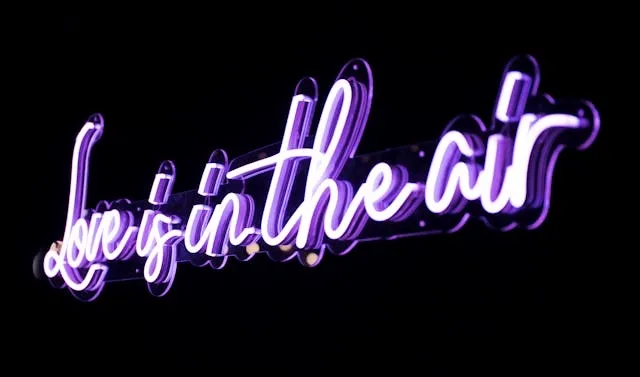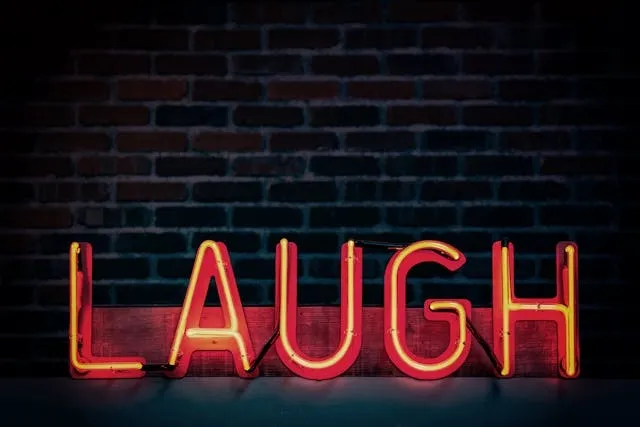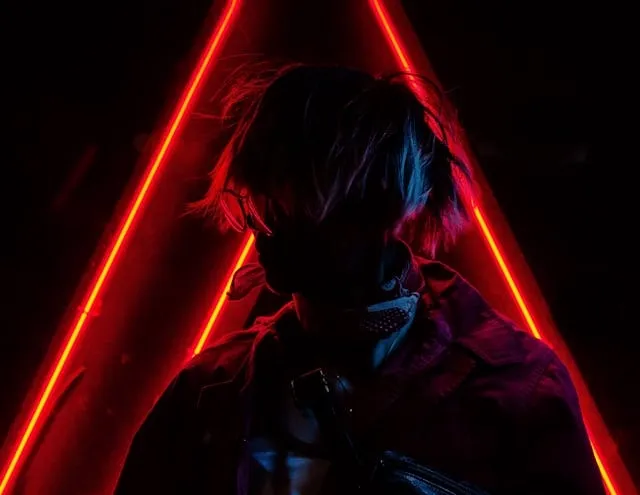Neon Light Colors: What Are The Brightest, Are They Illegal And Gasses Used
Discover the fascinating and vibrant world of neon light colors, from the brightest hues to the considerations that come with them. Explore the gasses used to create these eye-catching signs, popular alternatives, and the regulations you need to know about for using them in different settings.

Key Takeaways
- The natural color of neon gas when it glows is the iconic orange-red seen in many traditional neon signs.
- Other gasses like argon and krypton can produce different shades of light, and phosphor coatings inside the glass allow for further variation.
- Different neon light colors are better suited to different purposes and environments, and you can achieve a wider spectrum of bright hues with LED neon signs.
- We supply high-quality custom LED neon signs for business or personal use, with flexible personalization options and cutting-edge technology.
Table of contents
-
What Are The General Neon Light Colors?
-
How Is Color Produced In Neon Signs?
-
What Varieties And Colors Can Neon Lights Be?
-
What Gasses Are Used In Neon Signs And Their Colors?
-
What Neon Lights Colors Are Legal? Why Some Are Restricted
-
What Colors Go Well With Neon Light Colors?
-
What Are The Trendy Neon Color Palettes?
-
What Is The Color Code For Neon?
-
How Do I Make Neon Colors In HTML?
-
What Neon Color Light Reduces Anxiety?
-
What Neon Color Is Best For Sleep?
What Are The General Neon Light Colors?
The color of a neon light can vary, but the most common ones include red, blue, green, and yellow. The very first neon light, created by Georges Claude in 1910, emitted a vibrant red-orange glow. This is the natural color you get when you electrically charge pure neon gas.
Other colors are achieved by using different gasses or adding phosphor coating to the inside of the glass tubes. Argon gas can be used to emit a blue light, while a mix of neon and argon produces a green or yellow hue.
These vibrant displays have made neon lights an iconic signage solution for commercial and decorative applications.

What Color Does Pure Neon Glow?
Pure neon gas glows with a bright red-orange color when electrified. This occurs due to the excitation of neon atoms by an electrical current, causing them to emit light at specific wavelengths.
The red-orange glow is the iconic neon signage, and other colors can be produced by using other gasses or adding a phosphor coating inside the glass. In comparing LED neon vs glass neon lights, you will find that many more colors can be achieved with the LED technology.
What Colour Is Neon Naturally?
Though normally invisible, the natural color of neon gas when electrified is a bright red-orange when electrified. This hue comes from the neon’s atomic structure, which emits photons of light at certain wavelengths when excited by an electrical current.
Other gasses may need coatings or additives to produce different colors, but neon naturally gives off this red-orange glow. This was first showcased by Georges Claude and remains a hallmark of traditional neon signs. It is the classic, iconic neon light color.
How Is Color Produced In Neon Signs?
Color is produced in neon signs via the excitation of atoms in the gas-filled glass tubes using an electrical current. The red-orange glow is emitted from pure neon gas, but different colors can be achieved by combining with other gasses or adding colored coatings to the glass.
Argon produces a blue light, and mixing it with mercury results in a bright white or green hue. Phosphor coatings inside the glass tubes can also alter the color of the emitted light. With a range of gasses and coatings available, a broad spectrum of vibrant hues can be achieved.
How Do Neon Signs Produce Different Colors? Role Of Its Electrical Discharge
The color of a neon light can be altered through a combination of gas mixture and tube coating. By mixing different gasses like argon and mercury inside the glass tubes, and by adding phosphor coatings, the visible color of the light will look different. The appearance of the light will also be affected by how dirty the tubing is, so it’s important to know how to clean neon signs.
Explore variations in gas mixture and tube coating to get the exact color hue you want for your neon sign. Skilled craftsmen are very knowledgeable in what colors can be achieved.
What Is The Process Of Neon Gas Excitation?
When electricity passes through the neon gas in a glass tube, it excites the atoms. This causes each atom to release energy in the form of light. These bright emissions are vibrant and colorful, producing the distinctive glow of neon signs. It is the process of exciting gas atoms with electricity that makes neon signs shine.
Experience the iconic red glow of traditional neon signs
With our custom red neon signs, you get the traditional neon light color with energy-efficient LED technology and the option to have different color shades.
What Varieties And Colors Can Neon Lights Be?
Neon lights offer a range of colors beyond the classic orange-red hue. A full spectrum of shades is achievable by combining gasses and phosphor coatings:
- Argon emits a blue light.
- You can add mercury to argon to create white or green.
- Phosphor coatings can allow for shades like green, purple, and yellow.
This versatility takes skill and expertise, and it is what makes neon lights so popular for different applications. You will find the technology in eye-catching signage and decorative lighting in various settings.
Can Neon Lights Be Any Color?
The color of a neon light can vary significantly through the use of different gasses and coatings. As we have mentioned, you can combine gasses in different ratios to achieve varying shades of blue, white, or green, and add phosphor coatings for shades of green, purple, and yellow.
However, this makeshift approach to customizing the color of neon signs brings limitations. Shades like true purple or pink can be challenging with the methods available in creating neon signs. LED neon signs, however, offer a wider spectrum of bright colors to create exactly the aesthetic you want.
What Are The Brightest Neon Colors?
The brightest colors in neon signs include vibrant red, blue, and green. With the brightness of these hues, they make eye-catching signage, advertising displays, and decorative lighting. With their bold, intense appearance, they attract attention and add a dynamic element to various settings.
If you want a broader range of vibrant colors to choose from, our custom LED signs are available with flexible design options and cutting-edge technology. Use our service to create high-quality pieces that are durable, energy-efficient, and offer the same iconic look with a wider range of bright color choices.

What Gasses Are Used In Neon Signs And Their Colors?
Neon signs actually use various noble gasses to produce different colors and effects:
- Neon emits a red-orange glow.
- Argon creates a stunning blue light.
- Mixed with mercury, argon can produce green or white hues.
- Krypton emits a pale white or light purple light.
- Xenon produces a blue glow.
By exciting these gasses with electrical currents, they release photons at specific wavelengths that result in their distinct colors. Neon and argon are the most commonly-used gasses, but krypton and xenon are sometimes used in specialized applications.
How Do Adding Different Gases Create Neon Light Colors?
You can create a diverse range of colors by combining different gasses in neon lights. The most common blend is to mix argon with mercury to produce a white or green glow. By varying the ratios of gasses in relation to one another, you can further expand the color palette.
For example if you combine argon and neon in different ratios, you can shift the color from blue to purple. Similarly, a blend of krypton and xenon in different ratios can create a range of hues from pale blue to light purple. These creative gas combinations give you a degree of flexibility when creating custom neon light colors, though not as much as you get with LED neon signs.
Why Is Neon Unique Among Noble Gases For Signage?
Neon stands out among the noble gasses for neon signs due to its distinctive red-orange glow. This hue is instantly recognizable, and it is the synonymous color with neon signage. Other noble gasses emit paler colors when electrified, but neon’s natural color is truly iconic and works well for various applications.
Generally speaking, neon is the preferred choice for many neon sign designers and enthusiasts.
Looking for a blue glow in your space?
Work with us to create a custom blue neon sign with LED technology capable of delivering a far wider spectrum of hues than traditional neon signs.
Start creating yoursWhat Neon Lights Colors Are Legal? Why Some Are Restricted
There are different regulations around neon light colors depending on local ordinances and zoning laws. Generally speaking, bright reds, blues, and greens are permitted for commercial signage to attract attention. But some jurisdictions may restrict certain colors, particularly any that could be mistaken for emergency vehicle lights.
If there are restrictions in your region, they are usually aimed at preventing confusion and maintaining road safety. Be sure to check if there are any restrictions in your area so that you remain fully compliant with legal requirements.
Environmental And Safety Considerations In Neon Color Production
As environmental regulations continue to evolve, both the production and disposal of neon lighting components are subject to increasing scrutiny. Traditional neon lights illuminate by electrifying noble gases like neon and argon, and there may be mercury vapor or phosphor coatings to achieve certain colors.
Some vivid results can be produced this way, but mercury and certain phosphor-based compounds can raise environmental and health concerns if they are not handled properly.
In response to this, manufacturers in 2025 are slowly shifting towards safer and more sustainable methods to produce colored neon lighting.
One of the key elements of this is to phase out mercury. Instead, manufacturers are favoring mercury-free argon mixtures and adopting recyclable glass and coatings that have lower toxicity levels. However, the main shift is towards LED neon alternatives, which are becoming increasingly common for vibrant color effects.
LED neon signs don’t use gas or phosphor - instead, they rely on colored diodes or diffused typing. This immediately eliminates hazardous waste, thus simplifying compliance with environmental regulations. And there is a much wider array of colors available to you.
If you are thinking about installing new neon lights, we recommend that you ask suppliers whether the color effects are achieved through gas mixtures, phosphors, or LED simulation. This can help you make an informed decision that gets the balance right between brightness, visual appeal, and eco-consciousness.
What Colors Go Well With Neon Light Colors?
Neon lights combine well with many different colors to create eye-catching combinations. For example red and blue create a striking contrast, while green and purple play off each other well. Choosing neon sign colors is all about considering key factors like:
- Brand identity
- Visibility
- Ambiance
Bright hues like custom pink neon lights grab attention, while softer tones can evoke a more subtle atmosphere. Ultimately, the best color combination depends on your desired aesthetic and the message you are conveying. Think carefully to get the right visual appeal for your needs.
What Are Popular Neon Color Combinations For Business?
Successful neon color schemes for commercial settings are typically aimed at one of the following:
- Reflecting brand identity: Consider choosing colors that align with your company logo or branding guidelines.
- Evoking emotions: Vibrant hues tend to attract attention and convey energy, while softer tones create a more playful or elegant atmosphere.
Choosing contrasting colors or complementary color palettes can help enhance visibility and make your sign stand out. Selecting neon colors thoughtfully ensures your signs effectively communicate the brand message and capture customers’ attention.
Enjoy an energizing green neon light wherever you need it
Our custom green neon signs can be personalized however you want and installed anywhere to display your design and bathe the surroundings in a pleasing glow.
What Are The Trendy Neon Color Palettes?
Trendy neon light color elements often feature bold or dramatic hues that grab attention. Current trends include:
- Electric blue and neon pink
- Neon green and deep purple
With these color schemes, you get a striking visual impact that works well in contemporary design. Combine color with the best font for neon signs to capture urban or street-style aesthetics. Mixing contrasting colors and incorporating metallic accents can elevate the look even further.
Embrace bold, dramatic color schemes to make a statement and stand out from the crowd.
What Is The Color Code For Neon?
The color code for neon depends primarily on the specific hue and intensity you want. The creation of neon light colors involves combining noble gasses to emit different colors, and you can alter them further with the inclusion of phosphor coatings inside the glass.
There isn’t a universal color code for neon lights like there is for RGB LED lights. If you want this at your disposal, choose our custom LED neon signs for your business or personal creations. Traditional neon sign manufacturers will let you know what colors are available and aim to customize each sign to meet your specifications.
Need an eye-catching purple neon sign?
With the advent of LED neon flex tubing, the spectrum of colors available for designing neon signs increased. Enjoy a pleasing glow from our custom purple neon signs.
Create one todayHow Do I Make Neon Colors In HTML?
To create neon colors in HTML, you must use hexadecimal color codes in combination with CSS styling. Electric blue is represented as #00FFFF, while the code for neon green is #39FF14, and you can use these to get a neon effect.
You can also enhance the neon appearance by adding CSS properties like text-shadow or box-shadow. These create a glowing effect around the text or other elements, simulating the vibrant appearance of neon light colors.
What Neon Color Light Reduces Anxiety?
Soft, calming neon light colors like pastel green or light blue are often helpful for reducing anxiety. They have a soothing effect that promotes relaxation and tranquility:
- Light blue: Reminiscent of clear skies or calm waters, evoking feelings of peace and serenity.
- Pastel green: Reflects nature and new beginnings, creating a sense of harmony and balance.
Incorporate these soothing colors into your environment by creating custom aesthetic neon signs with us to help alleviate anxiety and create a calming atmosphere to fight against stress or tension.

What Neon Color Is Best For Sleep?
Gentle, muted colors like light pink or lavender are ideal for promoting good sleep. These soft hues have calming effects on the mind and body, inducing relaxation and preparing for restful sleep:
- Lavender: This is known for its soothing properties, making it conducive to a restful environment.
- Light pink: Reflecting warmth and comfort, this can help create a cozy atmosphere that promotes relaxation and better sleep quality.
Incorporate these colors into neon sign bedroom ideas for your decor to contribute to a more rejuvenating sleep experience.
Frequently Asked Questions About 'Neon Light Colors'
What Colors Can Neon Lights Be?
The natural color of neon is an orange-red glow. But you can achieve shades of blue, white, purple, green, and yellow, or you could opt for LED neon signs to get virtually any color you want.
What Neon Light Colors Are Illegal?
There are no neon light colors that are illegal. However, in some jurisdictions, there may be restrictions on certain shades close to major roads to avoid clashes with lights on emergency vehicles.
